Victims Assitance
Victim assistance in Polisario-controlled Western Sahara, extremely limited since monitoring began in 1999, is worsened by the fact that most survivors live in extreme poverty in refugee camps. A lack of public transportation in the region made it very difficult for survivors to access the limited services available. With the start of the Action on Armed Violence (AOAV) mine/ERW clearance program in 2006, AOAV began providing emergency aid and transportation in Polisario-controlled Western Sahara to complement a similar service provided by the UN Mission for the Referendum in Western Sahara (MINURSO) in Moroccan-controlled Western Sahara. However, given the vast and remote territory, emergency response and transportation remained inadequate.
The Chehid Cherif National Center for Mine and War Victims consistently provided basic medical care for war victims, including landmine survivors. The center also offered vocational training programs (when funding allowed), although demand for services consistently exceeded supply. All medical services in refugee camps were free but facilities lacked adequately trained staff and resources. Rehabilitation and prosthetics improved in 2008 and continued to be provided through 2013 with the start of an ICRC-supported program in the Rabouni rehabilitation center, serving Saharawi refugees from Polasario-controlled Western Sahara; before this, obtaining access to physical rehabilitation was virtually impossible as no services were available for those living in nearby refugee camps. International technical and financial assistance for physical rehabilitation decreased in 2011 as the ICRC Special Fund for the Disabled ceased providing support to the rehabilitation center in Laâyoune, in Morocco-controlled Western Sahara.
There was an acute lack of economic opportunities for survivors; psychological support in the camps was insufficient to address the needs of the population. ASAVIM was founded in 2005 to collect information about survivors and their needs, refer survivors to available services, and advocate on their behalf. There was no government coordination of victim assistance by Morocco during the period, but there was regular coordination between the Chehid Cherif Center and ASAVIM in the refugee camps and in Polasario-controlled Western Sahara.
Victim assistance
The Polisario authorities established the Sahrawi Mine Action Coordination Office (SMACO) to coordinate activities “related to landmines, demining and landmines victims.” At the end of 2013, ASAVIM was awarded a grant by the ICBL-CMC’s Survivor Network Project (SNP) to provide peer support and referrals to survivors and other persons with disabilities and to strengthen the network.Assessing victim assistance needs
During 2013 and into 2014, ASAVIM continued to work in cooperation with the Polisario government to identify mine/ERW victims and other victims of armed conflict and to assess their needs. Collected data was added to the database established in 2012 by ASAVIM, with support from AOAV.The Ministry of Defence shared their database on veterans with disabilities for inclusion in the survey.
In order to improve victim assistance planning, coordination, and the provision of services, the results of the survey were shared with representatives of the Polisario government (including the ministries of social affairs, health, education, and cooperation), and also with survivors, the ICRC, and other international organizations such as the Spanish Red Cross, UNHCR, and MINURSO. Data from the survey were included in the voluntary Article 7 report submitted by Polisario authorities to the Convention on Cluster Munitions.
Victim assistance coordination
SMACO, established by presidential decree in July 2013, is the national authority responsible for the coordination of all activities related to landmines and cluster munitions (including victim assistance) and has been designated as the national victim assistance focal point. The Polisario authorities also named ASAVIM as “an institution that is in charge of all questions related to mine victims such [as] compiling data about them and assessing their needs as well as finding ways for financing, educating and supporting them in all aspects of life.”
In 2013 and into 2014, SMACO, ASAVIM, the Ministry of Health, the Ministry of Public Recruitment and Vocational Training, representatives of the legislature, and representatives of international organizations met to promote the rights of mine and ERW victims and to consider the drafting of a national law to protect these rights. A draft law was under consideration as of February 2014.
Survivor participation and inclusion
Survivors, through ASAVIM, coordinated regularly with the Chehid Cherif Center and relevant Polisario government institutions in order to refer survivors to available services.
ASAVIM was involved in the ongoing implementation of data collection and needs assessment. ASAVIM and its survivor members also implemented an economic inclusion program, provided peer support, and carried out advocacy activities.
Source: LM
